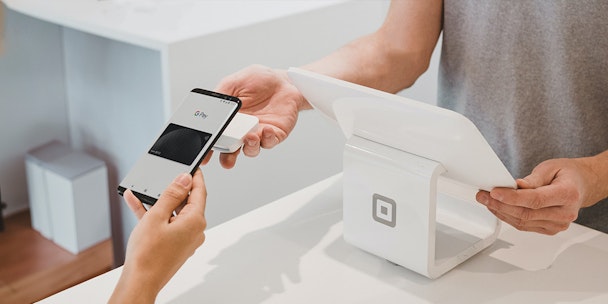How mobile app marketing became an economic lifeline for retailers
For The Drum's Deep Dive into The New Retail Landscape, Fred Simmons (communications team, Remerge) explores how retailers, facing economic challenges and shifting consumer habits, are leveraging in-app retargeting campaigns to boost revenue and engagement in the era of mobile commerce.

As consumer spending habits change, so do the technologies that are used to buy goods and services. In recent years, retailers have come under increasing pressure to diversify their sales channels and rethink their approach to marketing. This article examines how smartphone apps have changed the retail landscape – and what brands can do to excel in the new era of mobile commerce.
What happened to retail?
It’s no secret that the last few years have been tough for brick-and-mortar retailers. High streets and shopping centers grew ever-quieter during the pandemic as consumers were confined to their homes. The economic downturn that followed only made things worse. Retailers around the world were hit with supply chain disruptions, labor shortages, and increased operational costs, making it harder than ever to maintain consistent inventory levels and offer competitive pricing.
But it wasn’t just retailers who were feeling the pinch. Economic inflation and soaring interest rates meant consumers had far less disposable income. A US-based study from 2023 by CNBC and Morning Consult found that 92% of middle-income Americans, (those who make between $50,000 and $100,000 a year), reported being worried about increasing prices, with nearly 80% of consumers opting to cut back on nonessential goods, like entertainment, clothing and appliances.

How mobile apps gave retailers a new lifeline
Despite the faltering economy and the impact of the pandemic, the most notable change wasn’t so much what consumers were buying – but rather how they were buying. The previous decade saw huge progress in mobile development for both web and apps, so even the most tech-adverse shoppers began embracing the immediacy and conveniences of buying on mobile. According to a recent report by Statista, a large portion of e-commerce growth is fueled by smartphones, with mobile sales reaching $2.2 trillion in 2023 and accounting for 60 percent of the world’s annual online spend.
As consumers shifted toward mobile commerce, many retailers began to develop their own apps – and the early adopters had a lot to gain. In 2022, Nike attributed an 18% increase in annual revenue to its various mobile apps. Ikea created added value with an AI imaging app to help customers visualize furniture in their homes, and Starbucks led the charge with its ‘order ahead’ features and in-app payments – which today process over 25% of their total transactions.
Advertisement
Mobile apps weren’t just helping retailers to offset lost revenue from their physical stores, but they provided a whole range of other benefits too. Through their apps, retailers could now acquire entirely new customers and learn more about them by studying their behavioral data. Armed with these rich insights, retailers were able to better refine their products and create loyalty schemes or special offers for their customers. It was a win-win for both sides.

How marketers turned app retargeting into a science
The app world may have offered retailers a new lifeline in challenging times, but success was by no means guaranteed. They now depended on mobile marketers to fuel app growth through user acquisition campaigns and to increase retention and revenue by compelling their existing customers to make in-app purchases. While app-based products and services can be advertised across practically all online and offline channels, marketers were quick to see the value in the first-party data that they were collecting on their users.
Not only could retailers monitor user behavior within their own apps, but they could even track their customers’ spending habits across other apps they were using. These insights would play a crucial role in turning mobile advertising into a data driven science – and it laid the foundations for an entirely new marketing channel – that of in-app retargeting. With the help of mobile advertising partners, retailers could retarget their app’s existing users by utilizing ad placements in other apps that their customers were using.
If users of a retail app were also spending time and money in gaming apps for example, and these gaming apps had available ad slots, it was a no brainer for retailers to retarget their existing customers there. Armed with extensive data on their users' in-app purchasing habits, retailers could create hyper-personalized ads. A single ad click was all that was needed to bring users out of a third-party app and back into the retailer’s own app, which in turn increased the likelihood of making a sale.
Advertisement
The efficacy of in-app retargeting is also backed up by the numbers, with studies showing that app users exposed to retargeting ads within 30 days of installation tend to generate 37% more revenue events than those who are not retargeted at all. The same study also concluded that retargeted users have a 152% higher engagement rate overall.

Top in-app retargeting campaigns for driving revenue
In-app retargeting strategies exist in varying forms – each with their own unique objectives. Our team at Remerge has been running them for over a decade and these are some of the top retargeting campaigns that’d we recommend for retail apps looking to increase their retention and revenue:
1. Engagement campaigns
Getting an in-app purchase often requires multiple marketing touch points with a customer. Retargeting new and existing users with engagement campaigns can help move them along your sales funnel and get them a step closer to purchasing. Engagement campaigns can help encourage recent installers to complete the registration of their account, remind them to revisit an abandoned shopping cart or simply entice them into your app to browse for products.
2. Discounts and special offers
Everyone loves a discount – but you have to use them wisely to protect the perceived value of your brand. By strategically segmenting your users, you can target each group with a tailored offer. For newly acquired users, a large discount may be the incentive they need to make that all-important first purchase. For previous customers who have purchased in the past, a smaller discount might be enough to get them buying again. On ‘singles day’ in 2020, AliExpress for example offered their users exclusive discounts through in-app retargeting ads and achieved an impressive 100% return on ad spend.
Suggested newsletters for you
3. Upsell campaigns
Loyal customers and big spenders already know your products, so they’re likely to buy again – even without a discount incentive. This creates the perfect opportunity for upsell campaigns, where users are retargeted with ads for products they’ve never tried, or those that might complement previous purchases. Retail apps can look at their historical data to determine which products are most likely to drive sales conversions.
4. Dynamic product ads
Dynamic product ads (DPAs) are highly data-driven, and many retail apps such as Checkout 51 have found them to be among the most successful ad formats for their retargeting efforts. DPAs are essentially a blank ad template that is automatically populated with items from the retail app’s product catalog. Let’s say someone buys running shoes from a sportswear app then later opens up their favorite mobile game where they are shown a pop up ad. The sportswear app (in collaboration with their advertising partner) can locate this user in the gaming app and make a bid to show them a sportswear ad.
If the advertising partner wins the ad placement, they will use intelligent algorithms and machine learning to dynamically build a tailored ad for that user. In this example, the advertising partner knows that the user recently bought running shoes from the sportswear app, so it’s reasonable to assume that they might need running socks as well. With this information, the advertising partner can build and display a carousel ad of the different running socks that the retailer has to offer. The visuals and messaging are pulled directly from the sportswear app in real time, making the ads highly relevant and compelling.
To learn more about in-app retargeting or utilize the above strategies for your app, get in touch with Remerge today.

Summary
As physical retail outlets grapple with economic pressures, mobile apps have provided them with an important new revenue stream. To maximize this new but highly-lucrative channel, retailers must work more closely than ever with app marketers and mobile advertising partners. User acquisition campaigns are essential for app growth, but the key to driving retention and revenue lies with in-app retargeting campaigns. The strategic use of discount offers, upsell campaigns and dynamic product ads are great ways for retailers to strengthen customer bonds while achieving their sales goals.
Content by The Drum Network member:

Remerge
Remerge specializes in in-app mobile advertising and uses intelligent algorithms to instantaneously publish ads across thousands of apps. This helps our clients...
Find out more
